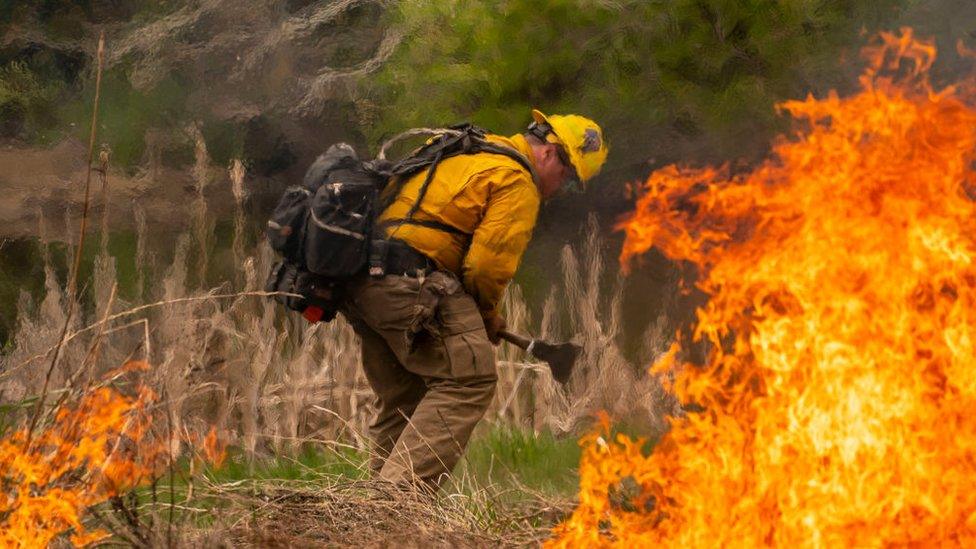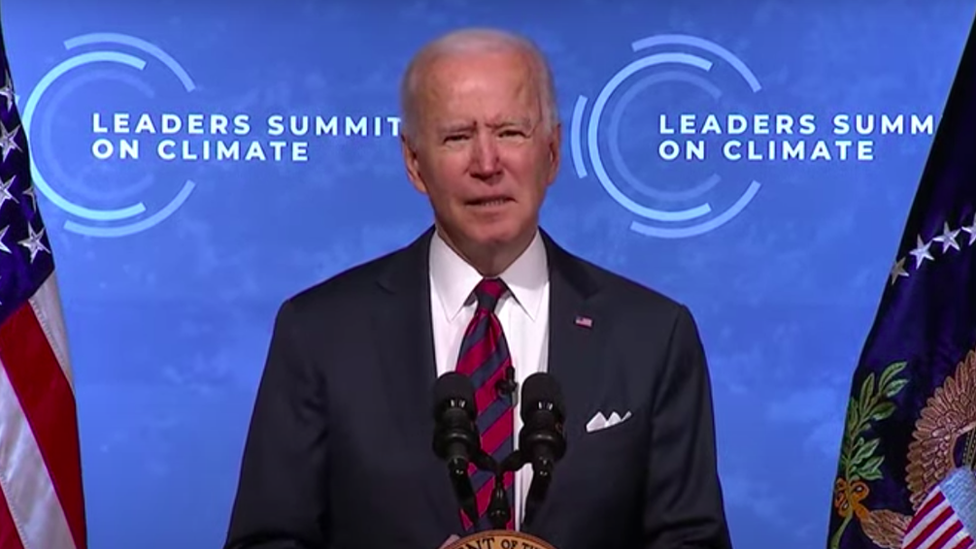US environmental agency releases climate report delayed by Trump
- Published

Wildfire season is growing longer, the report found
The US Environmental Protection Agency (EPA) has released a new report on climate change that had been delayed by the Trump White House since 2017.
The Climate Change Indicators report charts the extent to which glaciers are shrinking, sea levels are rising and flooding is increasing.
The impacts are being felt by Americans "with increasing regularity", it says.
The indicators showing mankind's role in climate change, had not been updated under former President Donald Trump.
The Climate Change Indicators website, external was regularly updated under his predecessor, Barack Obama.
Mr Trump has long been a sceptic of human-caused climate change, at times calling it a "hoax".
Hereiti lives in the South Pacific Ocean. She worries that rising sea levels and pollution are threatening the health of the oce
EPA Administrator Michael Regan said in a statement announcing the resumption of the survey: "Combatting climate change - it's not optional. It's essential at EPA."
"We will move with a sense of urgency because we know what's at stake.
The report takes in data from dozens of US agencies, and shows the damage climate change has already caused.
What does the report say?
Coastal flooding is becoming more common, especially in cities along the Atlantic Ocean and Gulf of Mexico. Floods are now five times, external more common in the cities surveyed than in the 1950s.
Arctic sea ice is thinning, and the minimum extent of its coverage has been getting smaller each summer. September 2020 saw the second smallest amount of Arctic sea ice ever recorded.
The average decrease for that month amounts to about 900,000 sq miles (1,450,000 sq km) - "a difference three and a half times the size of Texas", the report says.
Ocean temperatures also hit a record-breaking high in 2020 and the water has grown more acidic over the past decade.
Wildfire season and pollen season are both starting earlier and lasting longer.
Heat waves are occurring about three times more often than in the 1960s.
The amount of energy use in the summer has nearly doubled since 1973. In 2015, air conditioning accounted for 17% of the average American household's energy consumption.
Incidents of Lyme disease have nearly doubled since 1991. It comes as ticks, the blood-sucking insects that spread the virus, appear in regions such as parts of Canada where they were previously unable to survive the cold.
Related topics
- Published22 April 2021

- Published3 May 2021
